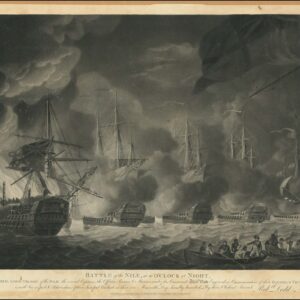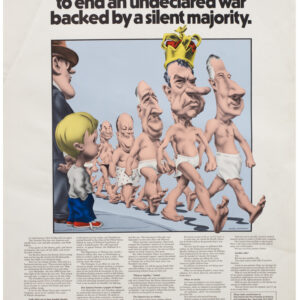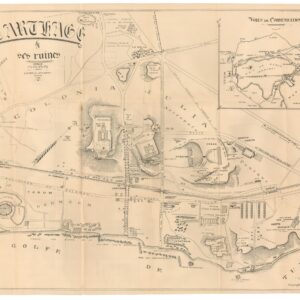The iconic 1865 Courier & Ives print depicting Lincoln’s Assassination.
The Assassination of President Lincoln at Ford’s Theatre in Washington DC April 14th 1865.
Out of stock
Description
Produced within months of the event, this emotive Currier & Ives lithograph is a chilling visual record of the shocking moment when Abraham Lincoln, the 16th President of the United States, fell victim to an assassin’s bullet. It producing this scene, two of America’s most famous print makers successfully captured a pivotal event in American history that shook the nation to its core and left an indelible mark on the collective social memory of all Americans.
Death at the Ford Theatre
On the fateful evening of April 14, 1865, Abraham Lincoln attended the play “Our American Cousin” at Ford’s Theatre in Washington, D.C. He was accompanied by his wife, Mary Todd Lincoln, and their guests, Major Henry R. Rathbone and his fiancée, Clara Harris.
An ill-fated decision to abandon the post of the president’s guard left Lincoln vulnerable to the sinister plot hatched by pro-Confederate conspirators, with John Wilkes Booth as their leader. Booth, a famous actor at the time, had learned of the president’s presence that evening and gained unrestricted access to the theatre. In a bid to destabilize the Union’s war effort, Booth and his co-conspirators sought to assassinate Lincoln and other key Union leaders following General Robert E. Lee’s surrender to Ulysses S. Grant on April 9th of that year.
Courier & Ives recall the tragedy.
The print itself meticulously depicts the tragic events of that evening. From left to right, it portrays the figures of Henry Rathbone, Clara Harris, Mary Todd Lincoln, Abraham Lincoln, and John Wilkes Booth. Henry Rathbone is shown attempting to restrain Booth as he fires his weapon. However, historical accounts suggest that Rathbone was unaware of Booth’s approach and reacted only after the shot was fired. The image captures Lincoln clutching the American flag, although it remains uncertain whether he did so in reaction to being shot or simply moved the flag aside to watch the play.
Aftermath
Booth escaped by leaping from the president’s box to the stage, about twelve feet below, but injured himself by catching the spur of his boot on a flag and breaking his leg. Despite his injury, Booth managed to evade capture until Union soldiers cornered him in a barn in Caroline County, Virginia, twelve days later, where he succumbed to a fatal bullet wound.
Following the assassination, a group of individuals, including Surgeon General Joseph K. Barnes, Dr. Robert K. Stone, and Dr. Anderson Ruffin Abbott, carried the wounded President Lincoln out of Ford’s Theatre. Henry Safford guided them across the street, taking refuge in William Petersen’s boarding house. Despite their best efforts, the medical treatment of the time could not save Lincoln, and he passed away at 7:22 AM on April 15, 1865.
Lincoln’s Legacy
Abraham Lincoln’s presidency was marked by the monumental challenges of the Civil War and the moral imperative of ending slavery. He is remembered for his historic debates with Stephen Douglas, the Emancipation Proclamation, the Gettysburg Address, and his second inaugural address. Lincoln’s leadership also led to the implementation crucial acts like the Homestead Act, revenue-based taxation acts, and the National Banking Act, which laid the foundation for the Bureau of Engraving and Printing. However, his presidency was not without controversy, as he sometimes selectively enforced or over-enforced laws to maintain national unity and achieve his goals.
Cartographer(s):
Currier and Ives was a highly successful American printmaking firm that operated from 1834 to 1907. The company was named after its founders, Nathaniel Currier and James Merritt Ives. They specialized in producing lithographic prints that depicted a wide range of subjects, including landscapes, historical events, portraits, and genre scenes.
Nathaniel Currier, born in 1813, started his career as a lithographer in the 1830s, creating images of current events and scenes of everyday life. He formed a partnership with James Merritt Ives, a bookkeeper, in 1857. Ives had a keen business sense and contributed greatly to the success of the firm. Together, they established Currier & Ives, with Currier as the primary artist and Ives managing the business operations.
Currier & Ives became renowned for their high-quality lithographs, which were affordable and accessible to a wide audience. The company employed a team of talented artists who produced the original artwork, which was then transferred onto lithographic stones for mass production.
Condition Description
Several tears and small areas of loss professionally repaired on the verso. Fairly even toning.
References



![[Vietnamese Maps of North America: Mexico, Canada, USA]](https://neatlinemaps.com/wp-content/uploads/2022/04/NL-01262-USA_thumbnail-scaled-300x300.jpg)
